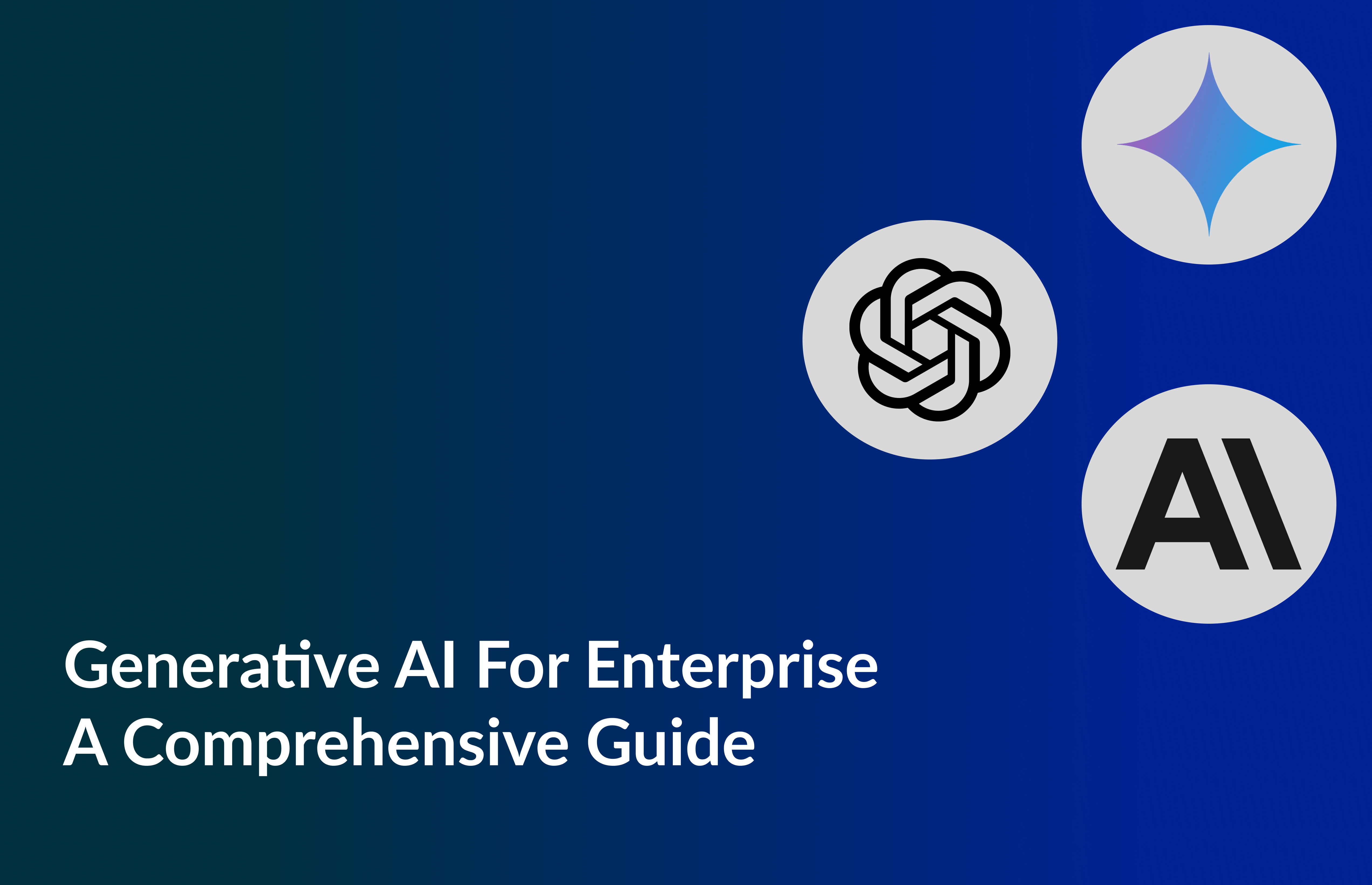The emergence of generative AI is poised to disrupt the enterprise landscape in a way not seen since the birth of the World Wide Web over three decades ago. This era, underscored by groundbreaking advancements such as ChatGPT, DALL-E, and LLaMa, is ushering in a paradigm shift that promises to redefine the very fabric of economic and societal frameworks.
For enterprises, the possibilities unlocked by harnessing the power of generative AI transcend mere competitive advantage. This transformative force holds the potential for profound digital change, one that can exponentially amplify revenue streams while simultaneously streamlining costs.
In this comprehensive analysis, we will delve into the following aspects of AI:
- Demystifying the enterprise context of generative AI through the lens of ‘hybrid human-AI workflows’.
- Providing a strategic roadmap for enterprises to assess, pilot, and ultimately deploy generative AI-powered hybrid human-AI workflows.

Introducing 'Hybrid Human – AI Workflows'
The integration of generative AI into your organizational ecosystem is not intended to supplant human talent or function as a conventional software package. Rather, the adoption of generative AI in the enterprise is driven by what Reboot Labs terms ‘hybrid human-AI workflows’. This innovative approach does not undermine the indispensable role of human capital; instead, it serves to augment and elevate it by seamlessly weaving generative AI tools into discrete points of traditionally human-driven workflows. A fundamental principle to embrace when embarking on this journey is that generative AI is not merely a software development conundrum but rather a multifaceted challenge encompassing tooling, training, and process optimization.
A Comprehensive Guide to Adopting Generative AI in the Enterprise
Amidst a rapidly evolving technological landscape fueled by a seemingly endless torrent of hype, it can be overwhelming to discern the optimal entry point. Drawing from our extensive experience guiding enterprises through this transformative process, we present a comprehensive framework to aid organizations in creating their inaugural hybrid human-AI workflows powered by generative AI.


Identifying Opportunities for Hybrid Human-AI Multipliers
Once you have developed a comprehensive understanding of AI’s capabilities and limitations, the initial step is to scrutinize your organization’s core operational processes, with a particular emphasis on those that are labor-intensive, repetitive, or directly involve customer touchpoints. Engage with front-line employees, as they possess invaluable insights into the processes that could benefit most from the integration of AI capabilities.
Validating Feasibility and Potential Return on Investment
While the fervent hype surrounding AI can distract from the reality of what processes can genuinely benefit from its implementation, it is imperative to validate both the feasibility and the potential return on investment. Enlist the expertise of professionals to augment your internal teams and develop a comprehensive implementation strategy that aligns with your organization’s unique needs and objectives.
Piloting, Iterating, and Scaling
Unlike traditional software development, where outcomes can be more accurately predicted, the emergent nature of AI-enabled workflows necessitates a more iterative approach. It is challenging to predict with certainty how well an AI-enabled workflow will perform until it is put into practice. Therefore, it is advisable to refrain from embarking on full-scale development or pivoting entire operations until you have successfully piloted a hybrid human-AI workflow in a controlled environment.
Transparent Communication About AI Initiatives
There is a palpable unease surrounding the potential implications of AI on the labor force. It is crucial to communicate transparently with your managers and employees about the anticipated impact of an AI implementation on their work environment. Dispel fears and misconceptions by demonstrating early on how AI works and the capabilities it brings to the table, enabling employees to appreciate the net positive impact it can have on their day-to-day responsibilities.
Educating and Training Your Workforce
Merely introducing a generative AI tool into your workplace is insufficient if your employees lack the requisite knowledge and skills to leverage it effectively. Ensure that your workforce understands the intricacies of working with AI, from the fundamentals of prompt engineering to engaging in multi-turn conversations with the AI to achieve the desired outcome.
Fostering a Culture of Continuous Learning and Adaptation
In the rapidly evolving AI landscape, it is essential to cultivate a corporate culture that embraces continuous learning and adaptation. Encourage your employees to stay abreast of the latest developments, attend relevant training programs, and actively explore novel applications of AI within their respective domains. Facilitate knowledge-sharing sessions and foster an environment where experimentation and innovation are celebrated.
Establishing Robust Governance and Ethical Frameworks
As with any transformative technology, the responsible and ethical deployment of generative AI is paramount. Establish robust governance frameworks and ethical guidelines to ensure that your AI initiatives align with your organization’s values, respect privacy and data protection regulations, and mitigate potential biases or unintended consequences.
Building Strategic Partnerships and Leveraging External Expertise
While cultivating internal expertise is crucial, it is equally important to recognize the value of strategic partnerships and external expertise. Collaborate with industry leaders, academic institutions, and specialized consultancies to gain access to cutting-edge research, best practices, and the collective wisdom of those at the forefront of generative AI development and implementation.
Building Strategic Partnerships and Leveraging External Expertise
The advent of generative AI marks an inflection point in the history of technological innovation, one that promises to redefine the very fabric of how we work, create, and solve problems. By strategically embracing hybrid human-AI workflows, organizations can unlock unprecedented levels of efficiency, creativity, and innovation, turning the challenges of today into the opportunities of tomorrow.
The path forward is one that requires a holistic and strategic approach, grounded in a deep understanding of your organization’s unique needs and the potential applications of AI. It is about leveraging AI not as a replacement for human talent but as a powerful tool to augment and enhance it. By identifying key areas for AI integration, validating feasibility, implementing pilots, fostering a culture of continuous learning, and establishing robust governance frameworks, enterprises can pave the way for scalable, impactful, and responsible AI solutions that drive sustainable growth and competitive advantage.




